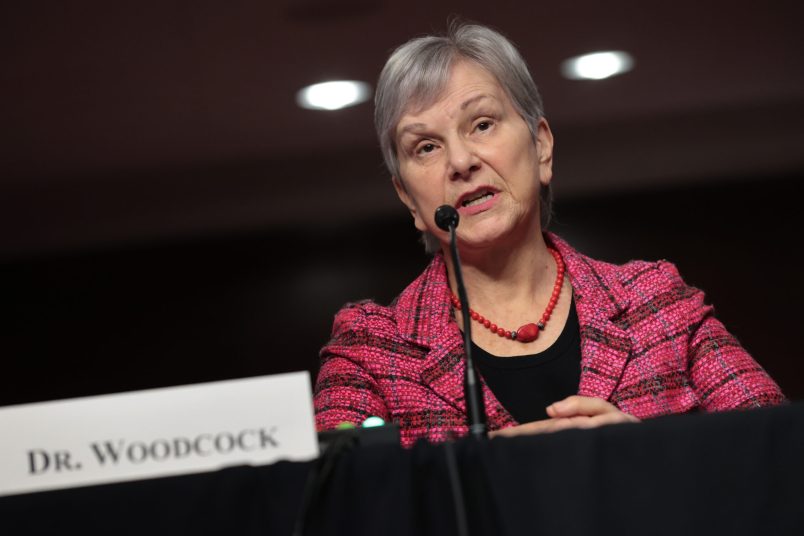One area of policy where I hoped the new Biden administration would excel was in its handling of the pandemic, but it has not done so. It wasn’t prepared for either the Delta or Omicron variants; it failed initially to acknowledge waning vaccine immunity and delayed access to boosters; it still doesn’t have an accurate count nationally of infections; and its public messaging on masks, tests, and vaccines has been confusing and sometimes misleading. That was epitomized by a statement from acting Food and Drug Administration Commissioner Janet L. Woodcock in the Senate hearings yesterday.
Senator Mike Braun, who opposes government vaccine mandates, asked Woodcock whether “we need to take a different approach” to the pandemic. In the course of her reply, I read in the news, Woodcock said, “Most people are going to get COVID.” I thought the newspapers must be quoting Woodcock’s statement out of context, but it was not misquoted. Here is the full statement: “I think it is hard to process right now what is happening: most people are going to get COVID, all right. And what we need to do is make sure the hospitals can still function, transportation and essential services are not disrupted while this happens. I think after that will be a good time to reassess how we are approaching the pandemic.”
Her statement is being taken by some people as honest doomsaying, but I think it was alarmingly sloppy, reckless and irresponsible, particularly for someone who holds a position of scientific authority. What exactly did she mean by “most”? 60 percent, 80 percent, 95 percent? 60 percent would be about 198 million people. 95 percent would be about 314 million. Consider these uses of the adjective “most” and what kind of percentage they might imply: “Most Americans speak English.” “Most birds have wings.” “Most restaurants are open.” “Most Danes are happy.” You can imagine wildly different percentages associated with the term “most” in each of these statements, and the same goes for Woodcock’s statement.
Why does it matter? It matters because the statement can be read and is being read as meaning 95 percent “right now” during Omicron. An American who is not elderly or immunocompromised, and has not received a vaccine (or a booster), could then assume that he or she will get COVID whether or not they get the vaccine or booster. In which case, they might well question why they should suffer the side effects of the vaccine or why they should even wear a cumbersome mask. The elderly or immunocompromised could understandably freak out at Woodcock’s statement and be unwilling to leave their homes.
If everyone is going to get COVID anyway, why is the Biden administration ramping up the production and distribution of masks to prevent people from getting it? And if everyone is going to get it, why aren’t they invoking the Defense Production Act to insure that there are adequate supplies of Paxlovid, the one anti-viral drug that appears to work well in keeping the infected out of hospitals? I am not saying government officials should make rosy predictions, as the Biden administration did in it first months, but I am saying that when they make dire ones, they should be much clearer about what they are saying and what its implications are for individuals.






